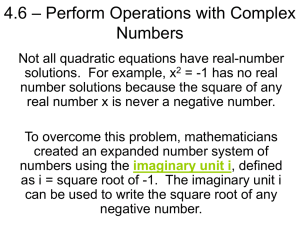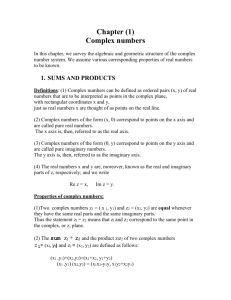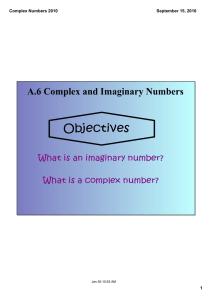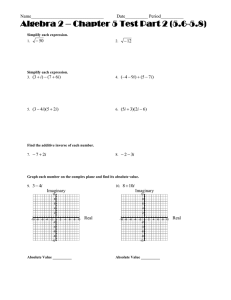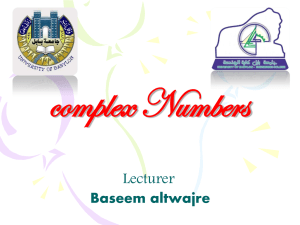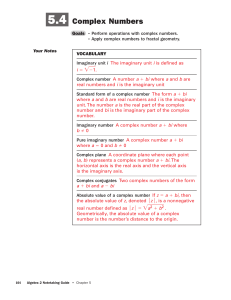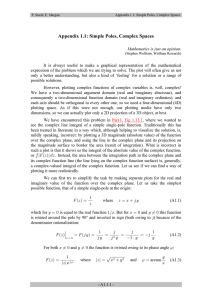5.4 Complex Numbers
advertisement
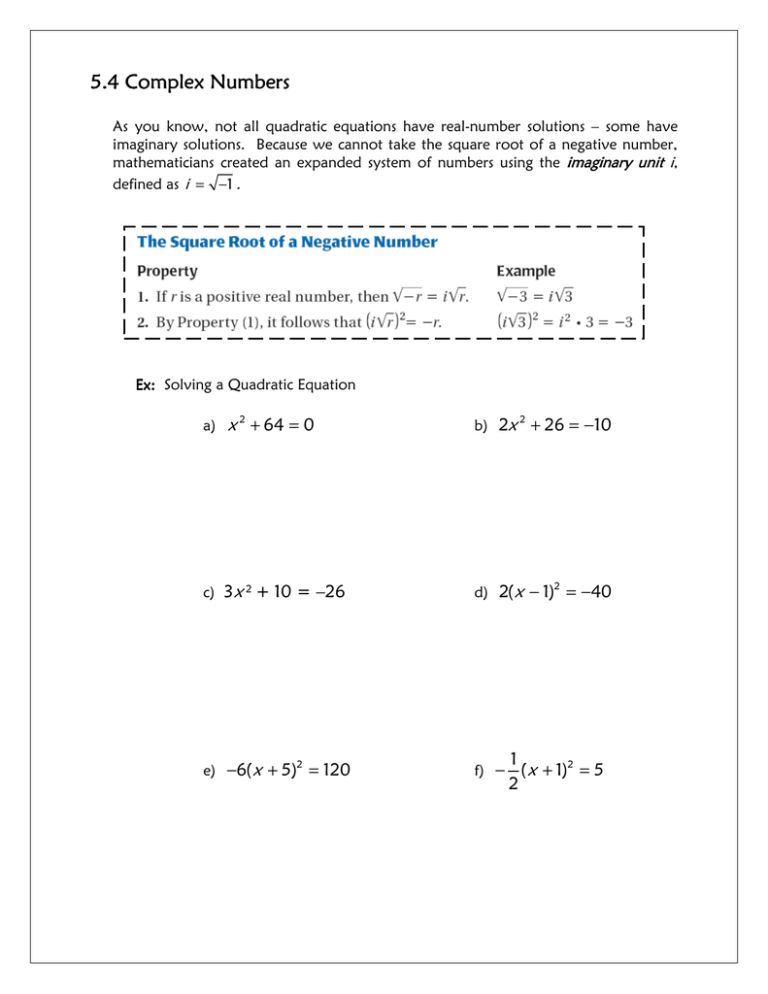
5.4 Complex Numbers As you know, not all quadratic equations have real-number solutions – some have imaginary solutions. Because we cannot take the square root of a negative number, mathematicians created an expanded system of numbers using the imaginar imaginary y unit i, defined as i = −1 . Ex: Solving a Quadratic Equation x 2 + 64 = 0 b) 2x + 26 = −10 c) 3x 2 + 10 = –26 d) 2( x − 1) = −40 a) 2 e) −6( x + 5) = 120 2 2 f) − 1 ( x + 1)2 = 5 2 A complex number written in standard form is a number a + bi, where a is the “real part” and bi is the “imaginary part.” Provided b ≠ 0, this number can be called an number. imaginary number Every real number corresponds to a point on the coordinate plane. Similarly, every complex number corresponds to a point in the complex plane. real axis: the horizontal axis in the complex plane imaginary axis: the vertical axis in the complex plane Plotting Complex Numbers of the form form a + bi 1.) Start at the origin and move a units right or left 2.) From there, move b units up or down Ex: Plot the complex numbers in the complex plane imaginary g) 2 – 3i h) –3 + 2i i) 4i real j) – 4 – i k) 5 l) 1 + 3i Ex: Write the expression as a complex number in standard form m) (4 – i ) + (3 + 2i ) n) (7 – 5i ) – (1 – 5i ) o) (–1 + 2i ) + (3 + 3i ) p) (2 – 3i ) – (3 – 7i ) q) 6 – (–2 + 9i ) + (– 8 + 4i ) r) 2i – (3 + i ) + (2 – 3i )
